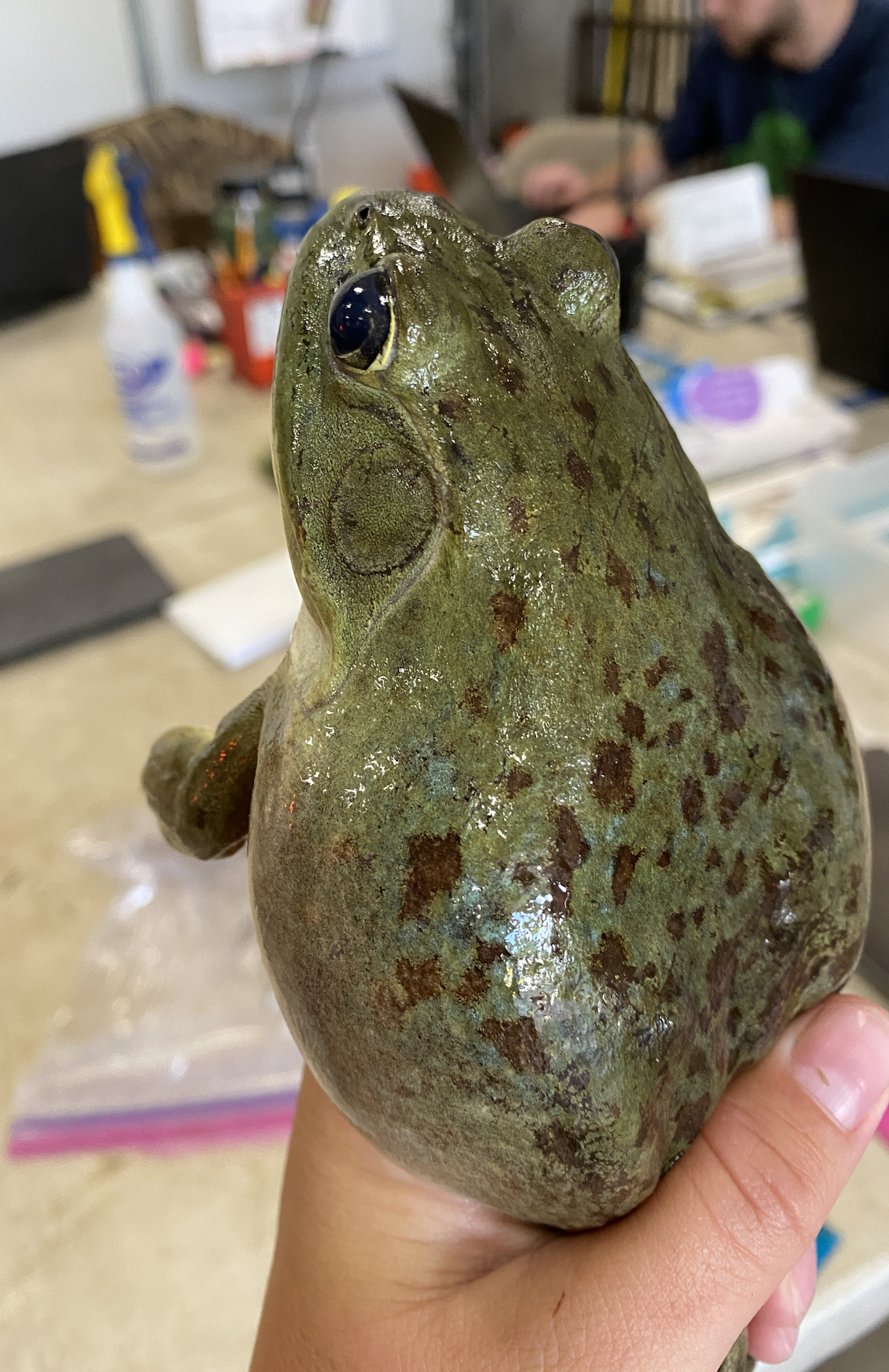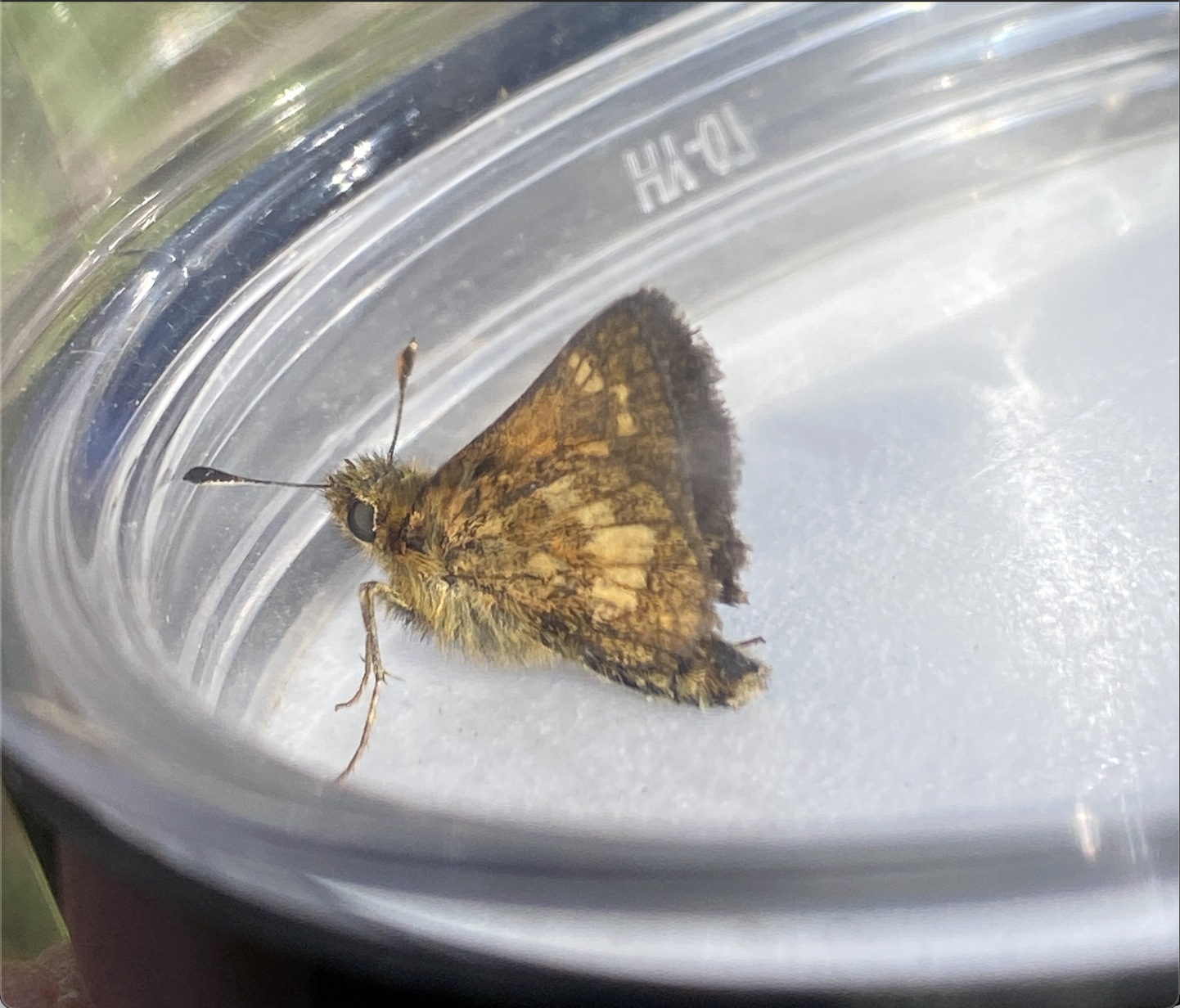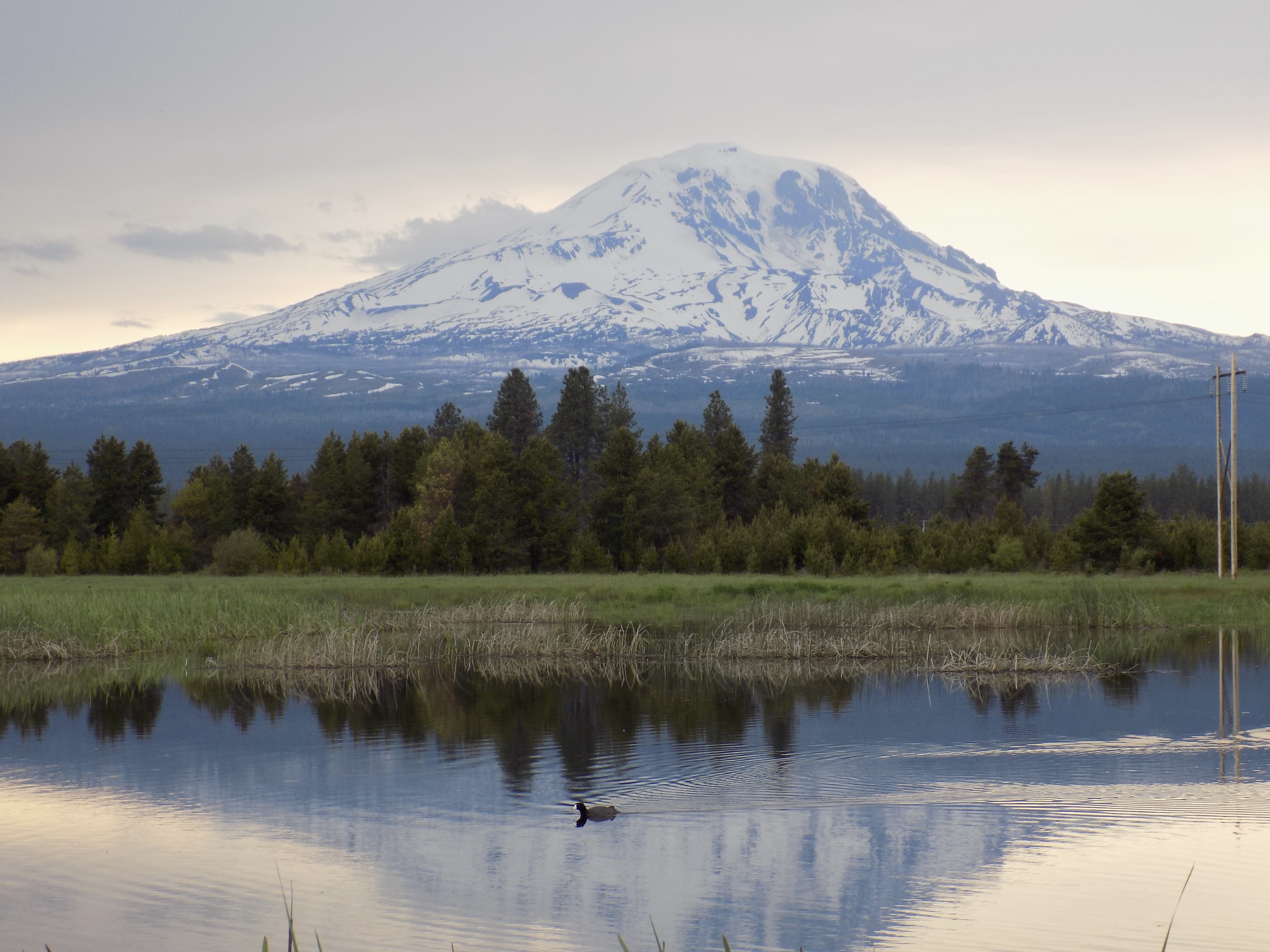Conboy Lake National Wildlife Refuge features a unique collection of flora and fauna set in a beautiful valley southeast of Mt. Adams. Most notably, the refuge is home to the endangered Oregon Spotted Frog (OSF), Sandhill Cranes, and Mardon Skipper Butterflies. While the property is primarily managed by the US Fish and Wildlife Service, the technician work is conducted by the AmeriCorps/Mt. Adams Institute Land Stewards (that’s me and Jake Kauzlarich!) and several other biologists from the Mt. Adams Resource Stewards (MARS) non-profit that make up the BRAT (Bullfrog Removal Action Team) crew.
Much of our work revolves around the invasive American Bullfrog, whether it be direct removal, auditory surveys, or looking for traces of them in water systems using eDNA. Jake, the BRAT crew, and I work together to remove bullfrog egg masses, set fyke nets to catch larval bullfrogs, and hunt the adults and juvenile bullfrogs at night when they’re most active. In addition to general habitat loss, the bullfrogs compete with the Oregon Spotted Frog for resources. Bullfrogs have also been known to predate on OSFs, which further strains their populations and necessitates human intervention. We collect morphometric and geospatial data on all harvested bullfrogs to improve our removal efficacy. One exciting thing about working closely with animals is seeing a great diversity of them. I caught a female bullfrog during a hunt, and she had some specks of blue in her coloration. This trait is not especially rare to the BRAT crew after handling thousands of bullfrogs over the years, but it is relatively uncommon to the public.

Earlier in the season, we completed presence-absence surveys for Mardon Skippers, a small, tawny-colored butterfly with a limited range. We’re fortunate to have a small number of them on the refuge, although they are challenging to find and successfully identify. They have a brief flight period between May and June and can only be spotted in calm wind conditions. We carried butterfly identification books and butterfly nets into our survey areas and walked along forest edges, hoping to catch one Mardon Skipper. Catching butterflies and identifying them in the field was a lot of fun. Jake and I likely caught at least one of every skipper that calls the valley home throughout our survey period! We eventually lucked out and caught around 5 Mardon Skippers in one sunny afternoon. While it may be considered a somewhat dull-looking animal, few people have seen Mardon Skippers. I felt fortunate to have come into contact with one and helped refuge staff confirm that they still call the valley home.

A common misconception about natural resources is that people go into this field because they have weak communication skills and want to be in the woods, away from others. While you may sometimes feel a bit isolated living in a rural environment, communication is non-negotiable in many aspects of this job. Multifaceted relationships exist between the refuge, government, private landowners, and other local entities that promote resource stewardship and a tightly-knit community. This field is highly collaborative and requires strong communication skills to engage with people from all walks of life. They are essential skills even off the clock since we live with some of our coworkers at the refuge bunkhouse. Everyone here is easy to get along with, and I’m honored to have them as friends and colleagues.
One of the most challenging aspects of the job has been bullfrog hunting. I have never hunted anything, especially at night in the middle of waist-deep water. I’m happy that I’ve been introduced to this practice despite my inexperience, and I’m excited to continue improving my skills as time passes. Though it may be physically challenging to navigate dense vegetation and uneven terrain in the dark, I actually feel incredibly comfortable in the water because I know there aren’t alligators or venomous snakes to watch out for like back home in Florida!
I’ve absolutely loved my time at Conboy Lake National Wildlife Refuge. I’ve learned so much about different survey methods and community engagement; there’s still much more to explore. This position has been a wonderful experience of comfortable independence with plenty of challenging moments that keep me engaged and growing as a biologist. This position has pushed me to trust my intuition more, which I have always struggled with. I’ve greatly appreciated the opportunity to network with folks from other facets of USFWS, USGS, and other entities by attending scientific conferences, reading recent papers, and traveling to other refuges. I’ve felt inspired to consider joining the BRAT crew for their season next year so I can continue working and living in this beautiful place. I’m looking forward to the rest of my service term doing a job that hardly ever feels like work.

